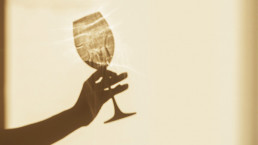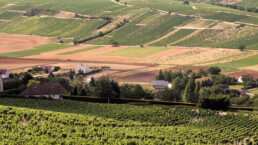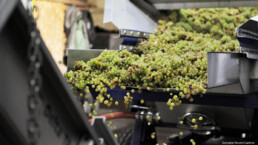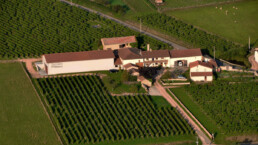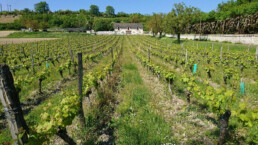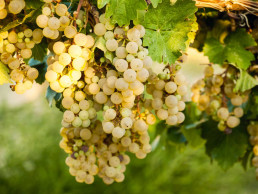Soirée Française at Atelier
Soirée Française at Atelier
Take a trip down sensory lane and join us for French-fueled gastronomic evening, with a wine-matched five course meal at Atelier K Road.
For one evening only, Atelier have devised a deliciously diverse dégustation that will transport you to a European wonderland, paired with six Dhall & Nash French favourites, from the vineyards of Burgundy, Champagne, Alsace and the Loire Valley. Hosted by the energetically enigmatic Jean-Jacques Bourvis, it's a night, not to be missed.
$140 per person. Visit Atelier to reserve a spot at Soirée Française today.
Focus On: The Loire Valley
If you’re longing to hop on a plane to an exciting wine destination – well, think again, it may be still some time away! The second-best option may have to be a bit of liquid armchair travelling instead. Yes, it’s time to pop open a luscious bottle of Loire wine, kick back, to sip and slip away to Le Jardin de la France – the Loire Valley.
Fortunately for you, Dhall & Nash has four awesome Loire valley producers: Alphonse Mellot in Sancerre, Domaine Vincent Carême in Vouvray, Domaine des Pothiers in the Côte Roannaise, and Domaine de Noiré in Chinon. Take your pick, or better still, order up a mixed case just to be on the ‘safe’ side and let the journey begin…
We all know that France has so many famous wine regions which means that the Loire Valley sometimes gets overlooked. But let’s change that as we FOCUS ON this fairy tale-like valley following the languorous Loire River dotted with picture perfect Châteaux sitting alongside historic towns and manicured vineyards that stretch back to ancient Roman times. Truly a secret gem of France waiting for you to discover.
Fun Fact:
The Loire Valley has a long history of winemaking dating back to the Romans in the 1st century AD. In the High Middle Ages (1000 to 1300AD), the wines of the Loire Valley were the most esteemed wines in England and France, even more prized than those from Bordeaux.
The Loire is a tremendous region offering the wine lover great diversity which makes it so alluring, as it yields wines that can suit a range of different tastes. The Loire encompasses 87 appellations and 14 grape varieties. You can select from sexy sparkling to bracing whites and freshly styled reds to breezy rosé and lush dessert wines. Another hallmark of Loire Valley wine is that consistently, it is one of the best quality-to-price ratios in France – totally a wallet-friendly wine region.
Fun Fact:
The Loire Valley is the largest French area on UNESCO’S World Heritage Site List.
The Rambling Loire Valley
The Loire Valley is the longest and most bountiful rural wine region in France, hence the moniker: the Garden of France. It follows the path of the Loire River, France’s greatest waterway. Stretching over 1,000 kms in length, all the way from Nantes on the north-western Atlantic Coast to the eastern reaches and ending a little south of Paris, with more than 4,000 wineries in between!
While on the same latitude as Dijon in Burgundy, it lacks the continental climate effect of that area, instead it is at the mercy of the feisty North Atlantic. But the Loire River has a significant warming effect on the macroclimate of the region, adding the necessary extra few degrees of temperature that allows grapes to grow when the areas to the north and south of the Loire Valley have shown to be unfavourable to viticulture. Thankfully, the wines it creates are never bold and brash – they are a picture of French elegance and restraint.
Small is Beautiful in the Loire
Despite its size, the Loire Valley is a place of small holdings, artisanal winemaking and boutique producers like Vincent Carême in Vouvray or Domine de Noiré in Chinon. There’s a “less is more” mindset in many practices from the vineyard to the cellar, where less oak and manipulation let the wines shine. The new generation is more conscious about chemicals and intervention. Many are now wholeheartedly embracing organics and biodynamics. Particularly in the sprawling region around Anjou there has seen a transformation in the past 15 years into a hub for precisely the sort of wines that are popular around the world right now – ‘natural’ – made with a minimum of artifice in the cellar; free from historical baggage about what they should taste like; often produced by first-generation winemakers with no family ties to wine. This is invigorating, fun, and innovative stuff.
Fun Fact:
The Loire Valley ranks fourth in France for total area of organic wine production.
The 'Star' Grapes of the Loire
A vinous journey along the Loire Valley takes in a plethora of grapes and wine styles. Crisp Muscadets (Melon de Bourgogne) around Nantes, the gorgeously sweet ‘moëlleux’ Chenin Blancs of the Coteaux du Layon and the exquisitely complex dry Savennières Chenins from around Angers, then the more immediately appealing whites and sparkling wines of Saumur. Cabernet Franc makes the luscious reds of Anjou and the autumnal reds of Chinon and Bourgueil. Continuing upstream leads you to the famously decadent Chenins of Vouvray and on to the Touraine, Sancerre, Pouilly-Fumé and Menetou-Salon, where Sauvignon Blanc reigns supreme. Finally, the new arrival to the A.O.C scene is the Côte Roannaise and their uber-luscious savoury Gamay Saint-Romaine. Generally, however, there are 4 grape varieties that take front seat in the Loire.
Fun Fact:
The Loire wine region is the biggest producer of French AOC white wines, AND is the 2nd largest producer of French AOC Rosé wines.
The many faces of Chenin Blanc:
The Loire is synonymous with great Chenin Blanc. This is a grape that demonstrates the region at its finest, conveying the essence of terroir and winemaker methodology. From sparkling wines to bone-dry versions, from off-dry to gloriously sweet styles, Chenin Blanc transforms beautifully in the bottle. Chenin is the ultimate vinous chameleon.
Its character is very much dependent on where it is grown. Near the banks of the river, it creates full-bodied, acid-driven almost waxy dry wines that need years to fully flower. But when Chenin vines are hidden in protected little pockets away from the Loire it can create some of the world’s greatest and longest-lived dessert wines in appellations such as Vouvray, Bonnezeaux, and Quarts de Chaume. Time to taste Dhall & Nash’s Vouvrays from top biodynamic producer Vincent Carême.
Cabernet Franc – Not playing second fiddle here:
The Loire Valley might be the only wine region in the world where the Cabernet Franc variety emerges from the shadow of Cabernet Sauvignon and gets the respect it deserves! It’s a pity it has been relegated to this understudy role elsewhere because it has a lot to offer. A prime example is Dhall & Nash’s very own Domaine de Noiré Elegance from Chinon.
Overall, the reds of the Loire are very expressive, and Cabernet Franc obviously excels.
“It is subtly fragrant and gently flirtatious… Because Cabernet Sauvignon has so much more of everything – body, tannin, alcohol, colour – it is often supposed to be necessarily superior, but I have a very soft spot indeed for its more charming and more aromatic relative, Cabernet Franc.” – Jancis Robinson MW
Loire Sauvignon Blanc is a far cry from a New Zealand ‘Savvy’:
This is the spiritual homeland of Sauvignon Blanc with the famous appellations of Sancerre and Pouilly-Fumé in the Upper Loire. Sauvignon Blanc performs very differently here – due largely to the unique silex (flinty) and limestone terroirs and the cautious cultivation of the winemakers producing some of the purest, most refreshingly mineral wines in the world – as exemplified by the legendary Dhall & Nash Sancerre producer Alphonse Mellot.
Fun Fact:
Incredibly, the Sancerre AOC did not always focus on Sauvignon Blanc! Historically, local wine growers mainly cultivated Chasselas and Pinot Noir. The phylloxera epidemic changed the vineyard landscape. Growers replanted with Sauvignon Blanc and by 1931, it became the only white grape allowed in the area. Pinot Noir was named the only red variety permitted to be grown.
Sea spray freshness of Muscadet (Melon de Bourgogne):
Muscadet is made from Melon de Bourgogne to produce wines that represent one of the world’s great partnerships with seafood and fish. Its crisp, no-nonsense, brisk fruit acts like a waft of fresh air, just touched by the salt of the nearby Atlantic ocean. Muscadet is not quite as simple stylistically as it seems at first. There is fresh Muscadet, the apéritif-and-oysters type of Muscadet. And then there is a richer style, occasionally aged in wood, but certainly with spice and yellow fruits. This richer style can age, developing toasty characteristics over four to five years. Worth seeking out.
Time to Decipher Those Tricky Wine Labels and Appellations
For simplicity, the Loire can be divided into three quite different wine districts. Each district specialises in many different grape varieties and makes wines that are unlike those of the other appellations.
The Upper Loire (Closest to the Massif Central at the source of the river):
This area is the most interior part of the Loire Valley with a drier and a more continental climate than the rest of the region – but it’s still cool climate. It is less than 100 kms from famous Chablis.
Sancerre:
Grape varieties: Sauvignon Blanc for the whites, Pinot Noir for the reds and rosés.
Terroir: Clay and limestone slopes, Kimmeridgian marl, silex and flinty soils.
Pouilly-Fumé:
Grape varieties: Sauvignon Blanc, plus a small amount of Chasselas under the Pouilly-sur-Loire appellation.
Terroir: Limestone, silex, marlstone and clay.
Côte Roannaise (A recent AOP from 1994 – closer to Beaujolais than the rest of the Loire):
Grape varieties: mainly reds – made from a local variety of Gamay called Gamay St. Romain.
Terroir: Sandy, granitic soils, with particles of rock flecked with veins of quartz. It is ‘spiced’ up by the presence of volcanic soils rich in basalt.
The Middle Loire:
Famed for its Chenin Blancs, the Middle Loire also produces world-class Cabernet Franc and is home to one of the largest sparkling wine appellations in France.
Anjou, Anjou Villages, Anjou Villages-Brissac:
Grape varieties: Cabernet Franc, Cabernet Sauvignon, Gamay and Grolleau for reds. Chenin Blanc, Sauvignon Blanc, and Chardonnay for whites.
Terroir: Anjou Villages-Brissac stretches over 10 communes has schist-based soils for age-worthy reds.
Bourgueil (North of the river):
Grape variety: Cabernet Franc (up to 10% Cabernet Sauvignon is also allowed).
Terroir: 50% gravel terraces, 50% Turonian limestone (tuffeau).
St-Nicolas-de-Bourgueil (Also North of the river):
Grape variety: Cabernet Franc (up to 10% Cabernet Sauvignon is also allowed).
Terroir: 75% gravel terraces and 25% Turonian limestone (tuffeau).
Chinon (South of the river):
Grape variety: Cabernet Franc (up to 10% Cabernet Sauvignon is also allowed) for the reds, Chenin Blanc for the whites.
Terroir: Alluvial terraces, limestone slopes and clay soils
Coteaux de l’Aubance, Coteaux du Layon, Coteaux du Layon Villages, Bonnezeaux and Quarts de Chaume:
These five appellations produce sweet wines made from Chenin Blanc, using either late-harvest or botrytised grapes.
Terroir: A large diversity of soil types, including sandstone, schist, and quartz.
Montlouis-sur-Loire (Vouvray’s baby brother):
Grape variety: Chenin Blanc.
Terroir: Turonian tuffeau and clay.
Fun Fact:
The Loire Valley is the second largest sparkling wine region after Champagne. Chenin Blanc, Chardonnay and Cabernet Franc are blended together utilising the traditional method to create exceptionally detailed and fine sparkling wines that challenge many Champagnes, and at a much lower price point. Try D&N’s Vincent Carême L’Ancestrale.
Saumur (Leading Methode Traditionnelle sparkling producing area of the Loire):
Grape variety: Chenin Blanc.
Terroir: Calcareous-clay with a high clay content.
Saumur Puy-Notre:
Grape varieties: Cabernet Franc and Cabernet Sauvignon.
Terroir: The famous tuffeau made up of sedimentary rock from the Turonian era, composed of chalky, sandy marine limestone.
Saumur-Champigny (Second only to Chinon for top quality Cab Franc):
Grape variety: Cabernet Franc.
Terroir: Tuffeau, as above.
Côteaux de Saumur:
Appellation name for a tiny amount of sweet wine made from Chenin Blanc.
Saumur Mousseux & Crémant de Loire:
Sparkling wines produced primarily with Chenin Blanc, Chardonnay and Cabernet Franc.
Savennières (Arguably the greatest dry Chenin Blanc wines come from this appellation):
Grape variety: Chenin Blanc.
Terroir: Schist. Two lieux-dits have cru status: La Coulée de Serrant (7ha) and La Roche-aux-Moines (17ha).
Touraine (A complex and confusing district with 3 sub-appellations and many styles of wine):
Grape varieties: Côt (local name for Malbec) and Cabernet Franc for the reds. Sauvignon Blanc and Chenin Blanc for the whites. Pineau d’Aunis, Gamay and Pinot Gris – some used for the rosés.
Terroir: Large diversity of soil types, including flinty clays, sand, and gravel.
Vouvray (World famous, classic, and classy!):
Grape variety: Chenin Blanc (up to 5% of Orbois is also allowed).
Terroir: Calcareous clay, with flint-clay.
The Lower Loire (closest to Nantes and the Atlantic coast):
Muscadet Sèvre-et-Maine, Muscadet Coteaux de la Loire, Muscadet Côtes de Grandlieu, the Muscadet village crus, Muscadet:
Grape variety: Melon de Bourgogne.
Terroir: Sandy soils around the lake of Grandlieu, southwest of Nantes. Soils rich in foliated metamorphic rocks such as silica, schist, and gneiss. A mosaic of soil types such as amphibolite and gabbro.
Wine is close to the heart and culture of the Loire Valley. Even over the centuries when the Loire has been the embodiment of splendour, extravagance, opulence, gastronomy, and nobility, it is actually the vineyards that have continued as the lifeblood of this breath-taking region
Hopefully from your armchair travel machine you’ve indulged the impulse to dive into some intriguingly divine drops and noticed that there is not much that the Loire Valley cannot do extremely well. It is a wine region well and truly on the rise.
Staff Wine Focus with Tori Haysom
Continuing our monthly staff favourite series is our bubbly Auckland Account Manager, Tori.
Tori has completed up to WSET Level 3 in wine and has worked in both the hospitality industry and wine retail for over ten years. She is passionate about wine and the stories behind them. You’ll find her either roaming the streets of Auckland with her bag of goodies or expanding her personal wine horizons at home.
We sat down with Tori to ask her the burning question...
"What is your current favourite wine and why?"
2015 Domaine Vincent Carême Le Peu Morier

"When I am asked to choose a favourite wine... I always struggle, as the more I taste, the more I change my mind. I always, however, have one or two wine styles that introduced me to the wines on the edge - Vouvray made from Chenin Blanc being one of them. Vincent Carême's "Le Peu Morier" is the epitome of what I call magic and is my current love if I had to choose just one.
Layered in lemon peel, beeswax, a cooling minerality and cheesecake crumbs - this wine is too good to be true. I find it impossible to focus on anything else during a sip... I dare you to try."

2015 Domaine Vincent Carême Le Peu Morier - Loire Valley, France
"From one of the top of the new generation of Vouvray estates, this wine is a delicious medley of fruit flavors. With a touch of honey to go with the apple, and citrus to give extra freshness, this is a beautiful wine."
Wine Enthusiast (93 points)
Alphonse Mellot: Pure Sauvignon Brilliance
“Alphonse Mellot’s white Sancerres are amongst the most brilliant and pure illustrations of the genius of the Sauvignon grape”
- The World's Greatest Wines, Michel Bettane and Thierry Desseauve
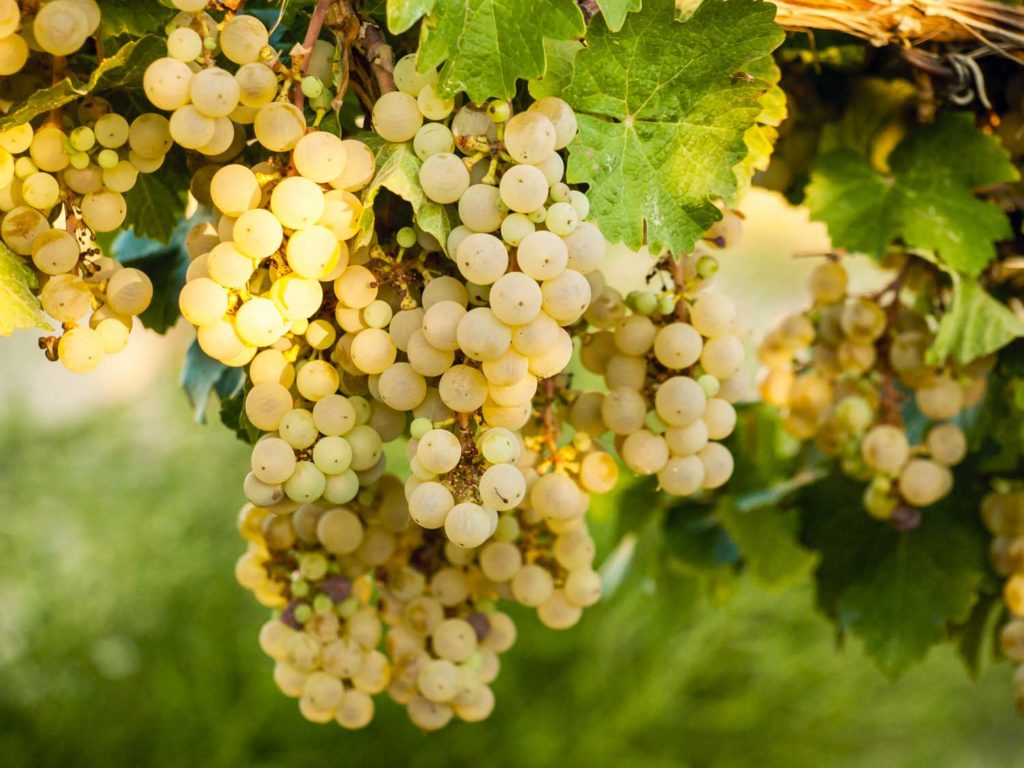
Not only are the wines from Alphonse Mellot considered to be some of the most outstanding Pinot Noirs and Sauvignon Blancs in the world, but the Mellot family itself must surely be one of the longest running winemaking dynasties that ever existed.
Situated in Sancerre, the stunning hilltop town bordering the River Loire in the Loire Valley, historic records mention the Mellot family in connection to wine production as far back as 1513. This winemaking family and business has survived medieval sieges, the French Revolution, phylloxera, two world wars and the enormous rise in international popularity of New World Sauvignon Blancs.
That is quite an achievement highlighting the resilience, forward-thinking and passion of this family. It also shows they must produce something very special.
So what is it exactly that makes Alphonse Mellot so special?
Alphonse Mellot’s highly revered wines come from La Domaine de la Moussiere, which is a single vineyard of over thirty hectares, situated on the South-West upper slopes of the Sancerre hill. This premium location ensures the vineyard gets optimum exposure to the sunshine, vital in this cool climate region, as well as sitting on the perfect limestone rich soils. The vineyard includes some very old vines, some close to 90 years old, which contributes to the complexity and heritage of the wines.
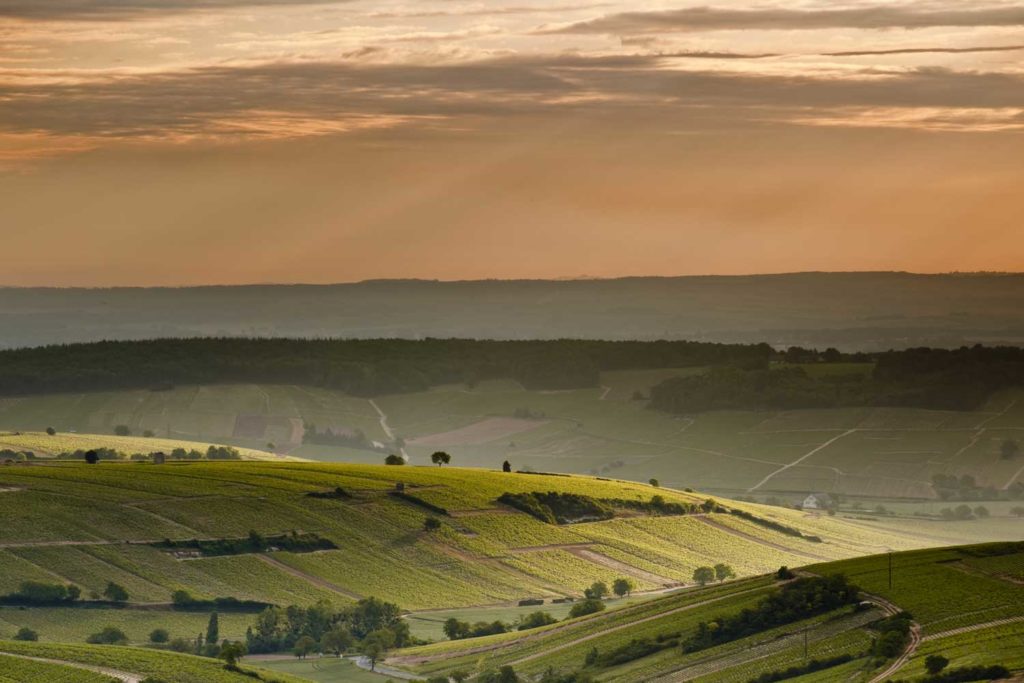
The family’s success and recognition grew over the years and in 1698 Cesar Mellot became the Wine Advisor to King Louis XIV. During the 19th century Alphonse Mellot established a tavern where people could relax and enjoy his local wines and the business flourished. Subsequently he was awarded a permit to ship the wines throughout France and internationally, thus launching their reputation for high quality wines around the world. The eldest son of the next generation has since always been called Alphonse Mellot and as the tradition continues the company is currently headed up by the 19th generation Alphonse Mellot.
The family now focuses on premium Sancerre Blanc made from Sauvignon Blanc and Sancerre Rouge and Rosé produced from Pinot Noir. Alphonse Mellot follows biodynamic philosophies and an intense planting programme (8-10,000 vines per hectare) which produces low yields. Tending to the vines and harvesting is completely by hand, which is increasingly rare in this region. It’s tough work for the team of around 40 they employ, however, the result is grapes of outstanding quality which have perfect balance and optimum flavours. The winery itself has the latest technology as the Mellots seek to continuously produce some of the world’s greatest wines.
The Pinot Noirs undergo malolactic fermentation and spend around fourteen months in oak. The Sauvignon Blancs are often left to age on lees for 10-12 months, adding further depth and complexity to the wines.
Of course the Sauvignon Blancs display the wonderful racy acidity associated with this cool climate region along with the unique minerality from the chalky soils. The wines also offer tantalising citrus notes and delicate pear flavours. They have great texture and elegance.
Sauvignon Blanc has not always been the traditional white grape varietal of Sancerre. Pre-phylloxera, that is up until the 1860s, the region was primarily planted with red varieties – Pinot Noir and Gamay – and the primary white varietal was Chasselas. However, once grafting was required post phylloxera, it was Sauvignon Blanc which adapted the most readily for the whites and became the grape that brought fame and fortune to the Sancerre region. As mentioned above, Pinot Noir continues to grow and is also a focus for Alphonse Mellot. It is interesting to note that being so far West in Central France, Sancerre is actually closer to Burgundy than it is to some of the other regions of the Loire Valley. It is just 75 kilometres to Chablis, in fact, and therefore also sits on the same chalky limestone Kimmeridgean soils, along with marl and flinty subsoils.
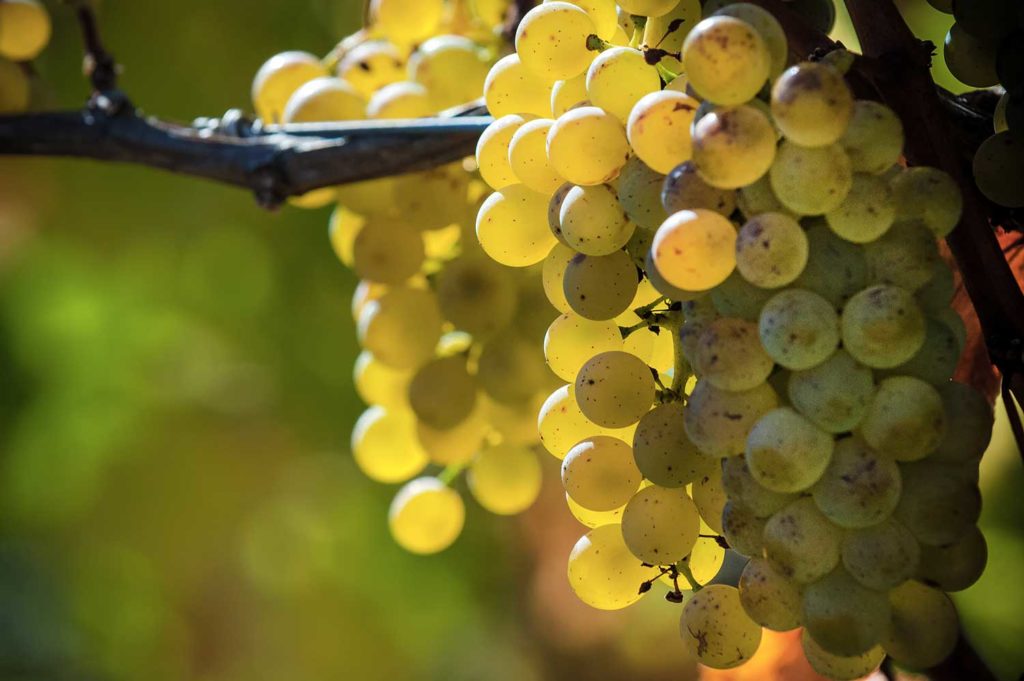
So to answer our original question - the wines from Alphonse Mellot are special due to their prime location in Sancerre and their incredibly long family connection with the region. They understand the terroir and combine traditions such as working by hand and with the land, with modern technology where beneficial. The Mellots have always looked forward, adapted where necessary but stood by their ethos of continuing to strive generation after generation for perfection.
Dhall and Nash are delighted to offer you Alphonse Mellot La Moussiere Sancerre Blanc 2016, which according to Roger Voss, Wine Enthusiast will have now evolved to be tasting its absolute best. He awarded this wine 91 points and says:
“The wine is sophisticated. It has a strong mineral texture and fine ripe citrus and pear fruits shot through with acidity. With its finishing fruitiness, this is already an attractive wine, although it will be better from 2018.”
 2016 Alphonse Mellot La Moussiere Sancerre Blanc
2016 Alphonse Mellot La Moussiere Sancerre Blanc
“The wine is sophisticated. It has a strong mineral texture and fine ripe citrus and pear fruits shot through with acidity. With its finishing fruitiness, this is already an attractive wine, although it will be better from 2018.”
Wine Enthusiast (91 points)
